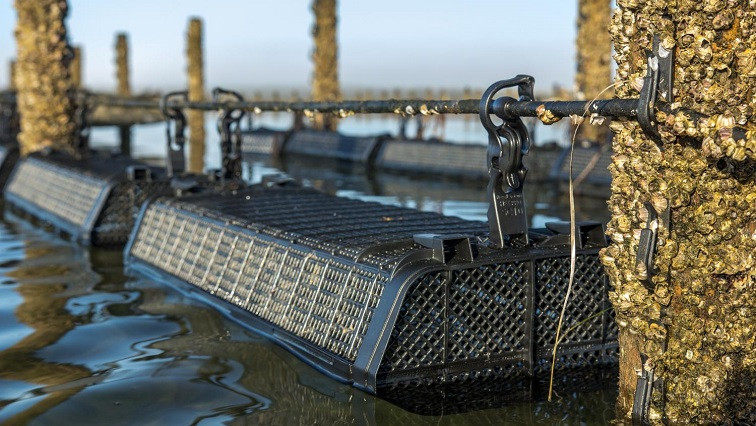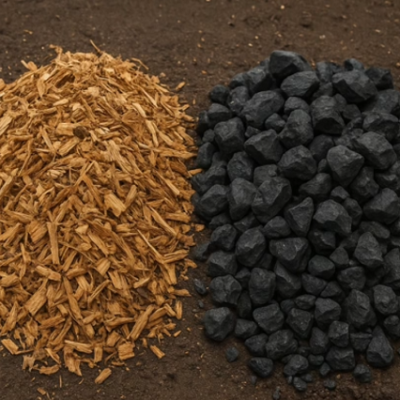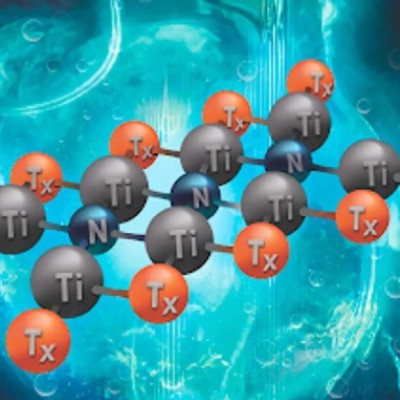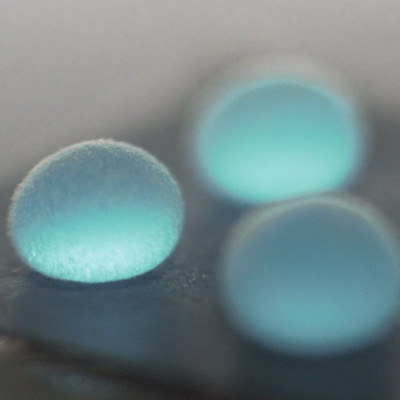Working with Australian firm Hexcyl Systems, a leading supplier of systems for oceanic farming, fellow down under company First Graphene Ltd. has developed graphene-filled high-density polyethylene (HDPE) materials for making super-strong HDPE oyster baskets for long-line farming systems.
Using First Graphene’s PureGRAPH products, HDPE showed improvements in strength, wear resistance and longevity. The initial results confirm the potential of graphene as a high performing additive for HDPE.
“A low dosage of less than one per cent of PureGRAPH has generated an increase in yield strength of more than 60 per cent, when compared to the base HDPE product,” said Craig McGuckin, Managing Director, First Graphene. “Samples showed a more than 10 per cent increase in ultimate tensile strength and at the same concentration, abrasion loss was reduced by more than 50 per cent.” The project will now move to a larger scale trial in real-world, ocean conditions, commencing in August 2020.
McGuckin believes this an important first step for its graphene products into this important global market. “This trial confirms that PureGRAPH graphene products successfully enhance the performance of HDPE materials in industrial applications. This is an important milestone in our strategy to develop additives for thermoplastic materials,” he says.
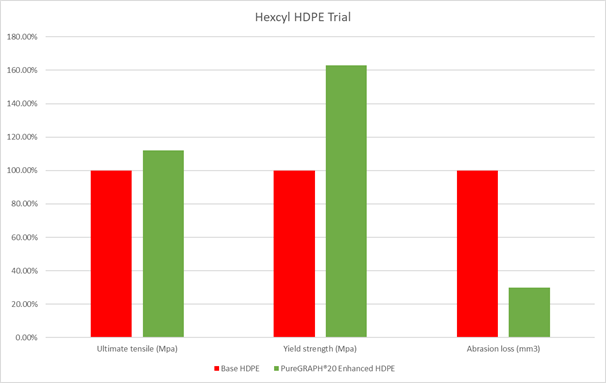 Yield strength, ultimate tensile strength, and abrasion loss are enhanced through addition of a one-percent dosage of graphene to HDPE.
Yield strength, ultimate tensile strength, and abrasion loss are enhanced through addition of a one-percent dosage of graphene to HDPE.
Using graphene as an additive in thermoplastic materials gives an improvement in properties such as mechanical, electrical, thermal, fire retardancy, chemical resistance and gas barrier. This provides the potential to move lower cost polymers such as polyolefins and polyamides up the “plastics performance pyramid,” creating new value for plastic manufacturers. Potential uses for these enhanced engineering plastics are light-weighting in automotive and aerospace as well as the delivery of a new generation of high-performing fire-retardant plastics in mass transport, construction and oil & gas.
At the university, the Warwick Manufacturing Group (WMG) have established a successful model for collaboration between academia and the private and public sectors and have very strong links with industrial partners such as Jaguar Land Rover, who have located their advanced research group at the WMG campus.
In July of this year, First Graphene announced a collaboration with the University of Warwick to unlock the potential of graphene in thermoplastic systems. First Graphene will collaborate with Professor Tony McNally, whose team have an established capability in incorporating nanomaterials, including carbon nanotubes and graphene, into bulk polymer systems. The company has committed to funding a PhD student and will also provide in-kind support for the 3.5-year project.
Read the original article on Plastics Today.

